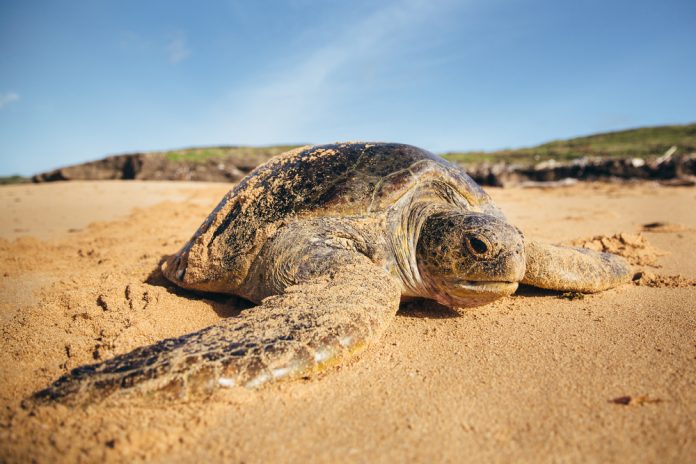Sea turtles have lived in the oceans for at least 150 million years. They are found in ocean waters off all the continents with the exception of Antarctica.
They cover great distances foraging across the seas mainly for jelly fish, sponges, sea grasses, algae and pelagic crustaceans. One tagged leatherback has bean known to travel 2,700 miles from French Guyana to New Jersey. Another tugged in South Africa was found
in Malindi, Kenya.
There are eight species of sea turtles. In ascending order of carapace length, these are:
Olive ridley (Lepidochelys olivacea) 30 inches; Kemp’s ridley (Lepidochelys kempii)
30 inches; Hawksbill (Eretmochelys imbricata) 35 inches; Australian flatback (Natator depressus) 39 inches; Black turtle (Chelonia agassizi) 39 inches; Loggerhead (Caretta
caretta) 47 inches; Green turtle (Chelonia mydas) 49 inches; and the leatherback
(Dermochelys coriacea) 74 inches.
In most cases the males are easy to identify by their long tails, which help grasp the females during mating. All species are at risk. Now is the time to either save them or lose them for ever.
Despite the ban on the export/import of sea turtle products by about 120 countries, all eight species are endangered or threatened worldwide. They are killed for their meat and shell; their eggs (which are soft and as round as ping-pong balls) are used as food (energising protein) and prized as aphrodisiacs; their nesting sites are destroyed for coastal
development; they are poisoned by pollution, drowned by fishlines and nets, and killed in many ways by sea vessels.
All begin active life as tiny hatchlings that dash for the sea against dismal odds, with less than a one per cent chance of living to maturity. In their nests, they are attacked by fungi
and fly larvae; ashore they are eaten by birds, crabs and small mammals, and urban
lights have been known to draw hatchlings inland where they die from dehydration and traffic; at sea they are caught by groupers, sharks, fishnets, and face many dangers
from sea vessels.
When hatchlings emerge from the sand it is thought they head for the sea because the water is brighter and, as experiments have shown, by crawling away from the land’s higher horizon. Once in water they have an inborn sense of magnetic direction – a biological compass of sorts. This compass and the direction of waves are presumed to navigate
them throughout their lives on their migrations routes.
While most males live entirely at sea, nearing the shoreonly to mate, all adult females come ashore to lay their eggs. For most this tends to be a solitary affair, but both the Olive ridley and Kemp’s ridley stage what Latin Americans call ‘la arribada’ – the arrival.
This instinctive biological spectacle is something scientists hardly understand. Thousands
of these turtles congregate off the shore for mating and, with the high evening tide, hordes of females hit the shore to lay eggs on the beaches.
All night till dawn, for several days, they will come and go.
Genetic evidence gathered so far seems to confirm folklore which has it that turtles always
return to nest on the beach where they were hatched. Nobody knows, when it is
time to nest, they do know how to go back where they were hatched. Some people believe
that they imprint as hatchlings on the smell of the sand and local water.
The olive ridley is the most populous (by estimates based on number of females nesting
annually). It is also one of the smallest,with a shell length of 30 inches or less. The leather-
back which reaches 2,000 pounds and grows to six feet is the largest of all marine reptiles.
Sea turtle research, which today enlists thousands of scientists and volunteers worldwide, was started in 1954 by the late herpetologist, Archie Carr, when he set up camp on the beach at Tortuguero, Costa Rica.
Green turtle populations had declined drastically, and Carr was out to learn about them so he could protect them from extinction. To date a remarkable amount of effort has been
applied by scientists in research but results are disappointing to many. Unanswered questions
include basic ones such as what the survival rates are, how and where each species grows up to maturity, how longnto grow up (some scientists speculate they take 10 to 50 years to mature and reproduce), and how they navigate.
DNA mapping and satellite tracking are among the methods used to research on their behaviour and migratory patterns.









